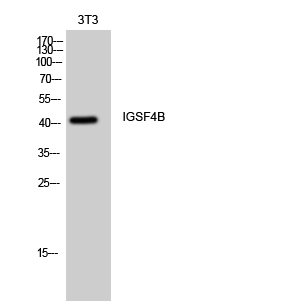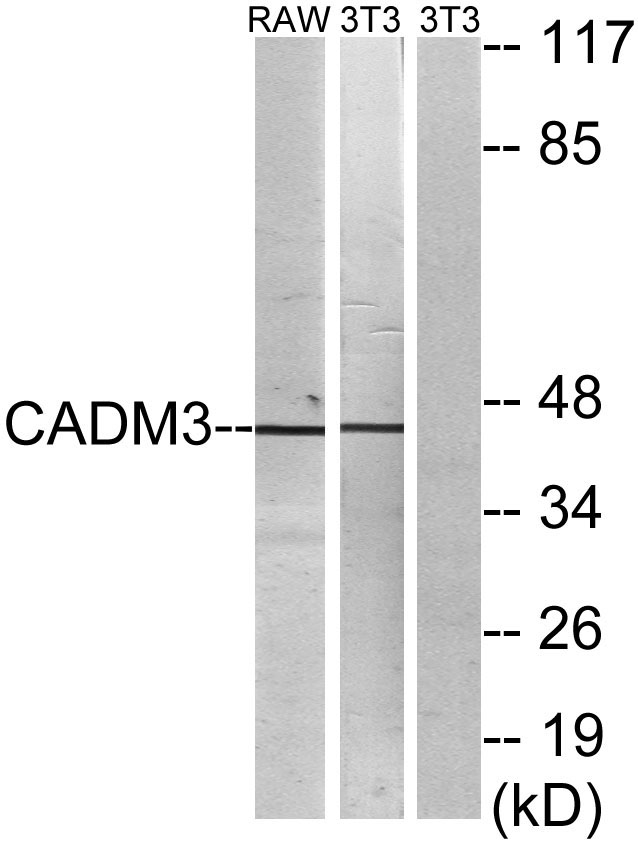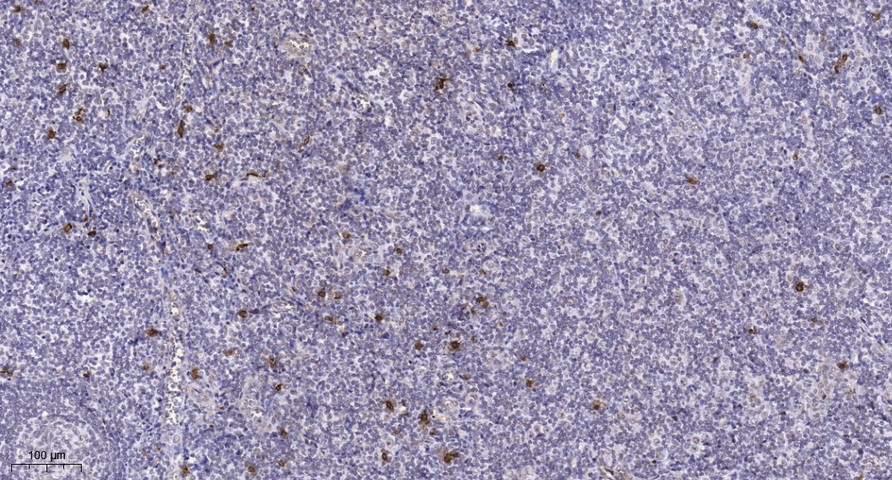IGSF4B Polyclonal Antibody
- Catalog No.:YT2294
- Applications:WB;IHC;IF;ELISA
- Reactivity:Human;Mouse;Rat
- Target:
- IGSF4B
- Fields:
- >>Cell adhesion molecules
- Gene Name:
- CADM3
- Protein Name:
- Cell adhesion molecule 3
- Human Gene Id:
- 57863
- Human Swiss Prot No:
- Q8N126
- Mouse Gene Id:
- 94332
- Mouse Swiss Prot No:
- Q99N28
- Rat Gene Id:
- 360882
- Rat Swiss Prot No:
- Q1WIM3
- Immunogen:
- The antiserum was produced against synthesized peptide derived from human CADM3. AA range:141-190
- Specificity:
- IGSF4B Polyclonal Antibody detects endogenous levels of IGSF4B protein.
- Formulation:
- Liquid in PBS containing 50% glycerol, 0.5% BSA and 0.02% sodium azide.
- Source:
- Polyclonal, Rabbit,IgG
- Dilution:
- WB 1:500 - 1:2000. IHC 1:100 - 1:300. IF 1:200 - 1:1000. ELISA: 1:5000. Not yet tested in other applications.
- Purification:
- The antibody was affinity-purified from rabbit antiserum by affinity-chromatography using epitope-specific immunogen.
- Concentration:
- 1 mg/ml
- Storage Stability:
- -15°C to -25°C/1 year(Do not lower than -25°C)
- Other Name:
- CADM3;IGSF4B;NECL1;SYNCAM3;TSLL1;Cell adhesion molecule 3;Brain immunoglobulin receptor;Immunoglobulin superfamily member 4B;IgSF4B;Nectin-like protein 1;NECL-1;Synaptic cell adhesion molecule 3;SynCAM3;TSLC1-like protein 1;TS
- Observed Band(KD):
- 43kD
- Background:
- cell adhesion molecule 3(CADM3) Homo sapiens IGSF4B is a brain-specific protein related to the calcium-independent cell-cell adhesion molecules known as nectins (see PVRL3; MIM 607147) (Kakunaga et al., 2005 [PubMed 15741237]).[supplied by OMIM, Mar 2008],
- Function:
- domain:The cytoplasmic region mediates interaction with EPB41L1, DLG3, MPP6 and CASK.,function:Involved in the cell-cell adhesion. Has both calcium-independent homophilic cell-cell adhesion activity and calcium-independent heterophilic cell-cell adhesion activity with IGSF4, PVRL1 and PVRL3. Interaction with EPB41L1 may regulate structure or function of cell-cell junctions.,induction:Markedly in glioma cell lines and prostate cancer cell lines.,similarity:Belongs to the nectin family.,similarity:Contains 1 Ig-like V-type (immunoglobulin-like) domain.,similarity:Contains 2 Ig-like C2-type (immunoglobulin-like) domains.,subcellular location:Localized at the cell-cell attached sites of the plasma membrane.,subunit:Homodimer. Can form trans-heterodimers with PVRL3/nectin-3. Interacts with EPB41L1, DLG3, MPP6 and CASK.,tissue specificity:Isoform 1 is expressed mainly in adult and fetal brain.
- Subcellular Location:
- Cell membrane ; Single-pass type I membrane protein . Cell junction .
- Expression:
- Isoform 1 is expressed mainly in adult and fetal brain. Isoform 2 is highly expressed in adult brain and weakly expressed in placenta. In brain, Isoform 2 is highly expressed in cerebellum.
- June 19-2018
- WESTERN IMMUNOBLOTTING PROTOCOL
- June 19-2018
- IMMUNOHISTOCHEMISTRY-PARAFFIN PROTOCOL
- June 19-2018
- IMMUNOFLUORESCENCE PROTOCOL
- September 08-2020
- FLOW-CYTOMEYRT-PROTOCOL
- May 20-2022
- Cell-Based ELISA│解您多样本WB检测之困扰
- July 13-2018
- CELL-BASED-ELISA-PROTOCOL-FOR-ACETYL-PROTEIN
- July 13-2018
- CELL-BASED-ELISA-PROTOCOL-FOR-PHOSPHO-PROTEIN
- July 13-2018
- Antibody-FAQs
- Products Images

- Western Blot analysis of 3T3 cells using IGSF4B Polyclonal Antibody

- Western blot analysis of lysates from NIH/3T3 and RAW264.7 cells, using CADM3 Antibody. The lane on the right is blocked with the synthesized peptide.

- Immunohistochemical analysis of paraffin-embedded human tonsil. 1, Tris-EDTA,pH9.0 was used for antigen retrieval. 2 Antibody was diluted at 1:200(4° overnight.3,Secondary antibody was diluted at 1:200(room temperature, 45min).



